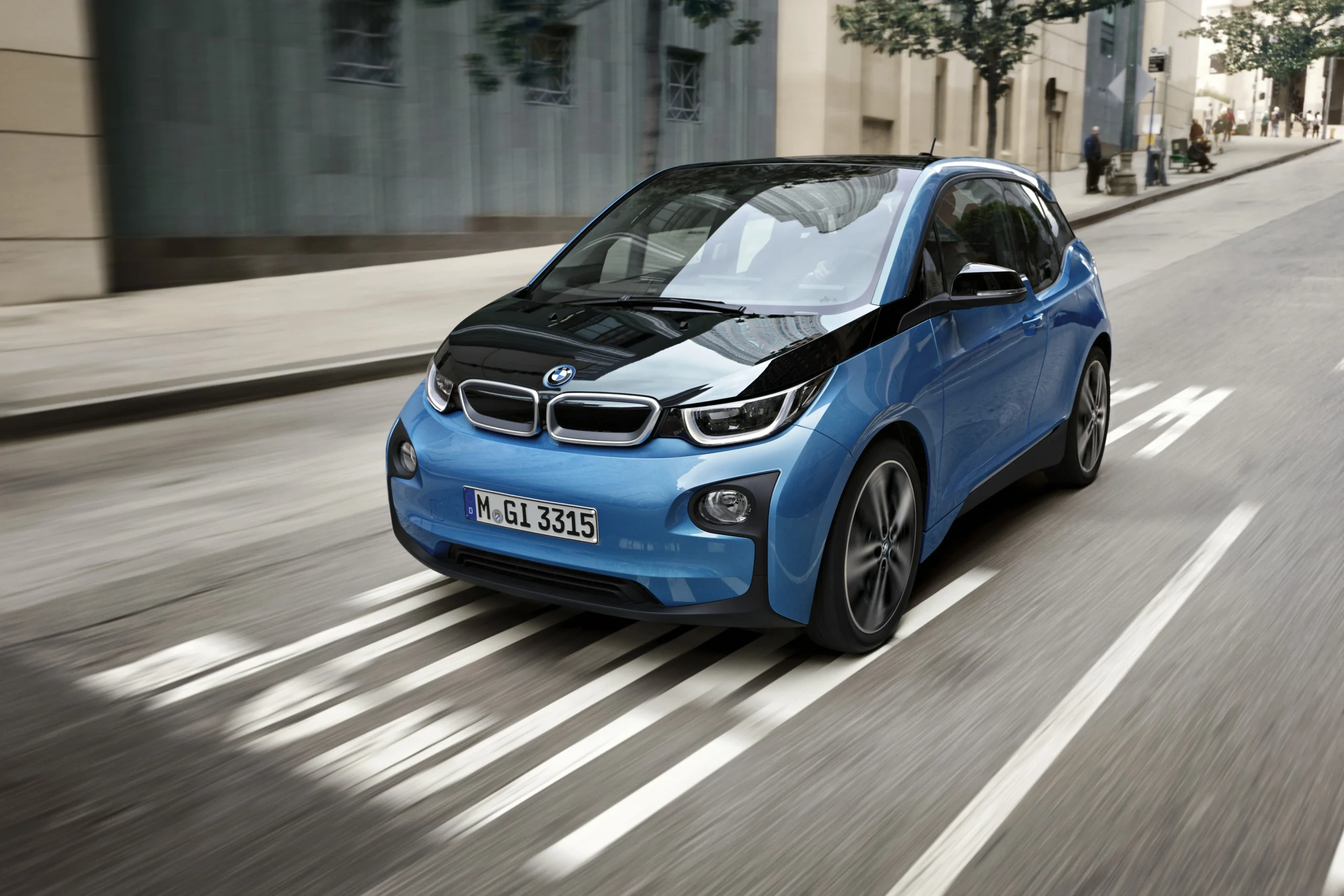The automotive industry is undergoing a rapid transformation, with electrification at the forefront of this change. While fully electric vehicles are gaining traction, hybrids remain an essential bridge between traditional internal combustion engines and electric vehicles. To fully understand this space, it is important to explore the different types of hybrids, which vary in design, technology, and application. The different types of hybrids can broadly be classified into series hybrids, parallel hybrids, series-parallel hybrids, mild hybrids with 48V systems, and plug-in hybrids. Each category has distinct advantages and limitations, and several examples show their varied capabilities.
Series Hybrid as a Type of Hybrid – The Example of the BMW i3
The series hybrid is one of the more straightforward types of hybrids. In this configuration, the internal combustion engine does not directly power the wheels. Instead, the engine functions as a generator, supplying electricity either to the battery or directly to the electric motor, which then drives the wheels.
The BMW i3 (Range Extender) demonstrates this technology. Designed primarily as an electric vehicle, the i3 included a compact petrol engine that acted solely as a generator once the battery was depleted. The engine ensured uninterrupted driving, addressing the issue of range anxiety while keeping the focus on electric propulsion.
The main advantage of this type of hybrid is its efficiency in city driving, where electric motors are most effective. However, reliance on the engine for electricity over long journeys can be less efficient than mechanical drive systems. This is why pure series hybrids are relatively uncommon in mass-market vehicles.
Series-Parallel Hybrid as a Type of Hybrid – The Example of the Toyota Innova Hycross
The series-parallel hybrid represents one of the most advanced types of hybrids. This system integrates the advantages of both series and parallel configurations, allowing the vehicle to operate as either depending on the driving requirement.
The Toyota Innova Hycross is a good example. Its system can seamlessly switch between electric-only mode for city driving, engine-only mode for longer cruising, or a combined hybrid mode when both power sources are required. This ensures a flexible and efficient drive across varying conditions.
Series-parallel hybrids are widely adopted in Toyota and Lexus models because they combine strong fuel economy with smooth performance. The trade-off, however, lies in higher costs and greater mechanical complexity compared to other types of hybrids.
Mild Hybrid with 48V Systems as a Type of Hybrid – The Example of the Maruti Suzuki Grand Vitara
Mild hybrids, often referred to as 48V systems, represent the entry point into electrification among the different types of hybrids. In this setup, the electric motor is not powerful enough to drive the car independently. Instead, it assists the engine during acceleration, regenerative braking, and start-stop operations. A small 48V battery supports these functions.
The Maruti Suzuki Grand Vitara employs this system in India. It cannot provide electric-only driving but enhances efficiency, smoothens the stop-start experience, and marginally reduces fuel consumption. Mild hybrids are becoming widespread as they offer manufacturers a cost-effective way to meet emissions regulations.
While they do not deliver the transformative benefits of full hybrids, mild hybrids play an important role in gradually transitioning consumers toward electrification at an affordable cost.
Plug-in Hybrid as a Type of Hybrid – The Example of the Land Rover Defender PHEV
Plug-in hybrids, or PHEVs, are among the most capable types of hybrids, as they feature larger batteries that can be externally charged. This allows them to deliver a significant electric-only driving range before the internal combustion engine is required.
The Land Rover Defender Plug-in Hybrid demonstrates the potential of this system. With its substantial battery capacity, it can cover urban commutes entirely on electric power while maintaining the ability to undertake long-distance journeys and off-road trips with the petrol engine. In essence it is nothing but a series-parallel hybrid switching between EV, ICE and a combined mode, but with the added benefit of a larger battery pack and external battery charging capabilities.
Plug-in hybrids provide the closest experience to full electric vehicles while retaining the convenience of traditional fuel for extended travel. Their adoption is strongest in premium markets, though higher costs and the need for charging infrastructure can present challenges in wider adoption.
Types of Hybrid – Conclusion
The different types of hybrids available today include series, series-parallel, mild 48V, and plug-in hybrids. The BMW i3 showcases the concept of a series hybrid. The Toyota Innova Hycross exemplifies the adaptability of series-parallel hybrids, the Maruti Suzuki Grand Vitara demonstrates the practicality of mild hybrids, and the Land Rover Defender Plug-in Hybrid demonstrates how PHEVs deliver the advantages of both electric and combustion power.
As stricter emission norms and consumer demand reshape the automotive market, it is important for buyers and industry stakeholders to understand the different types of hybrids. Each system provides unique benefits that align with different driving patterns, budgets, and infrastructure conditions.

